Gloving in yeovil
clothier, giles & co
Glove Manufacturers of Addlewell Lane
In 1889 George Giles, a leather tanner, and his partner glove manufacturer Frederick Clothier (father of Sidney Clothier, also a glove manufacturer and four-times Mayor of Yeovil), formed a company called Clothier Giles with a factory in Addlewell Lane next to Dodham Brook. The company was, to a degree, self-sufficient in that the raw leather was processed and the finished gloves were produced in the same premises. The company specialised in the manufacture of grain and suede gloves as well as general suede products.
For a brief period at the close of the nineteenth century, the company was known as Clothier, Hitchcock, Giles & Co and were listed in Whitby's 1898 Yeovil Almanack Advertiser. By 1903 they had reverted to Clothier, Giles & Co and remained as such until they ceased trading.
After the Second World War the company was run by George Giles' son, Frederick John Giles, who was also Master of the Honourable Company of Glovers in 1948-49. At this time the company employed a combined tannery and glove-making staff of around 250 plus outworkers. By 1972 the number of staff declined to 67 on the gloving side of the business and 31 in the leather dressing side although greater efficiency in production methods had ensured that output had actually increased.
In the 1950s a glove-cutting school for apprentices was founded at the factory, although this was closed by 1960.
|
Yeovilians
remember... |
Clothier, Giles
& Co Ltd closed
the gloving side
of the business
in 1975 to
concentrate on
the production
of leather
clothing. The
company finally
ceased trading
in 1986.
gallery
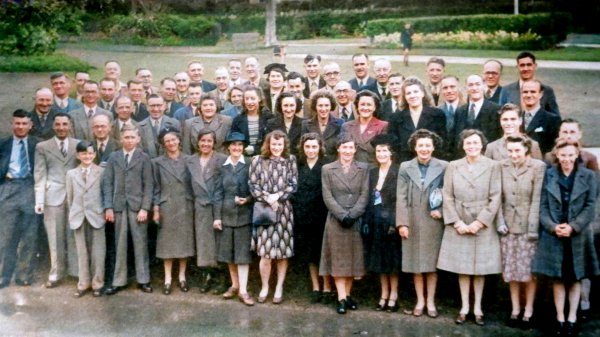
A colourised photograph of the staff of Clothier & Giles assembled in Sidney Gardens around 1950, presumably for an outing.

The factory seen from Park Street in a colourised photograph of the mid-1960's.

From the Cave
Collection
(colourised),
Courtesy of South Somerset Heritage Collection
....and seen from the other direction, from Park Street, in a colourised photo of the mid-1960s.
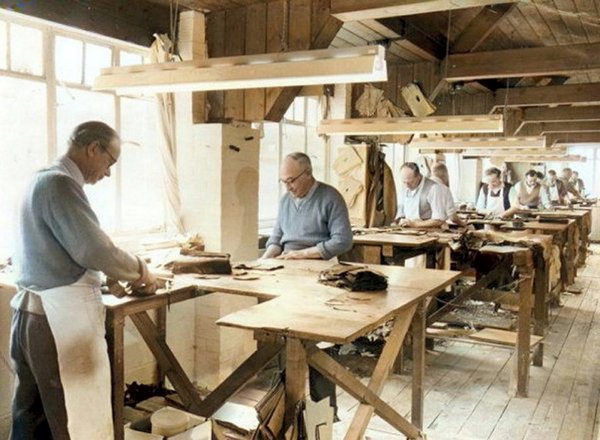
The cutting room of Clothier & Giles glove factory, photographed in the early 1960s.
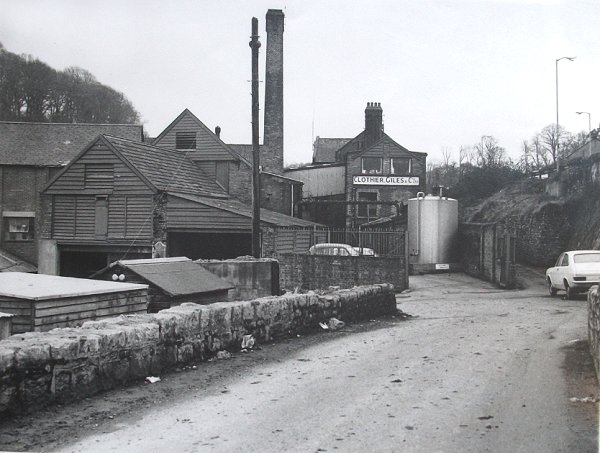
A photograph of 1973 showing the glove factory of Clothier, Giles & Co.
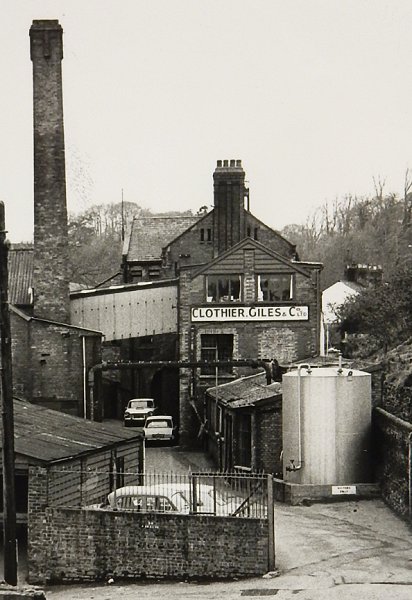
.... and a closer view taken around the same time.
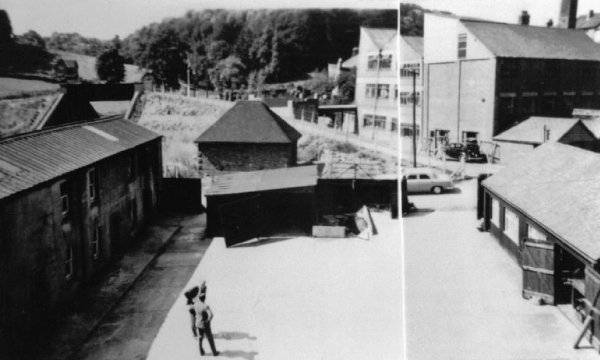
Courtesy of
Roger Froude
The yard of Parker, Brooks & Long. At left is the glove factory (the former Coronation Buildings) and at top right is Victoria Bridge over the railway. At top right is the rear of the Clothier, Giles & Co's factory.
Clothier, Giles & Co in photographs
The following collection of photographs are courtesy of Roger McElliott and show the various departments of Clothier, Giles & Co in the 1930s.
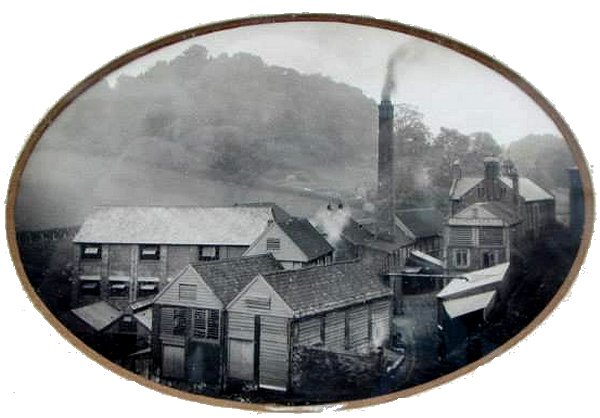
General view of the leather dressing yard and glove factory.

The pit house.
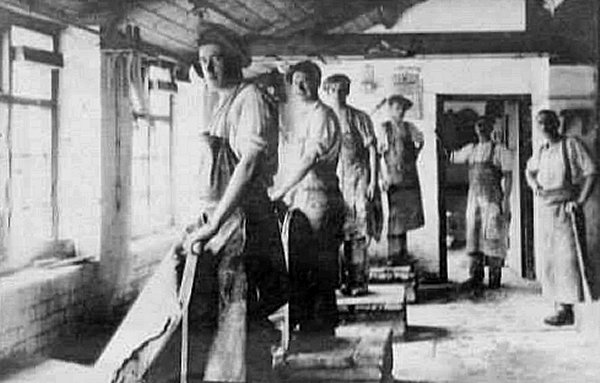
The dressing yard.

The staining shop.

The wheeling shop.

The ironing shop.
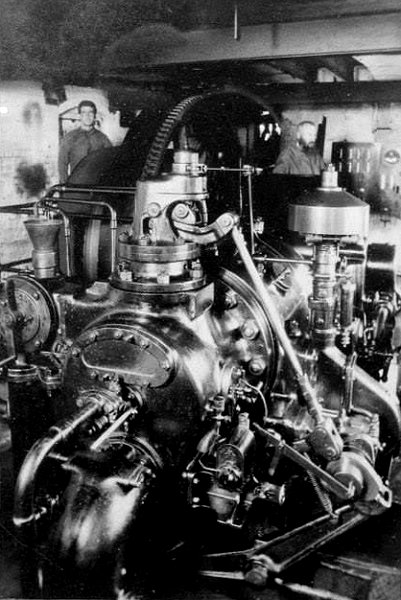
The engine and electrical plant.
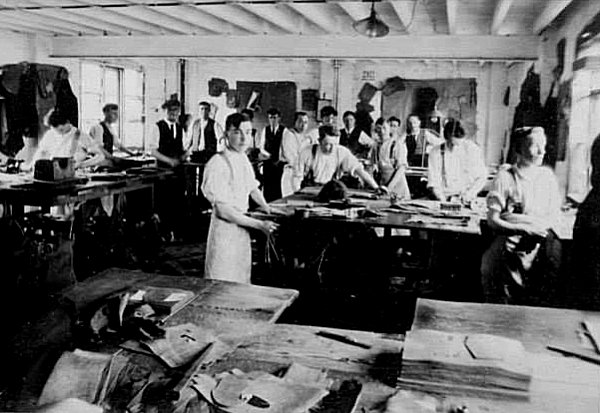
This
photograph
features in my
book "Lost Yeovil"
The cutting shop.

The trimming department.
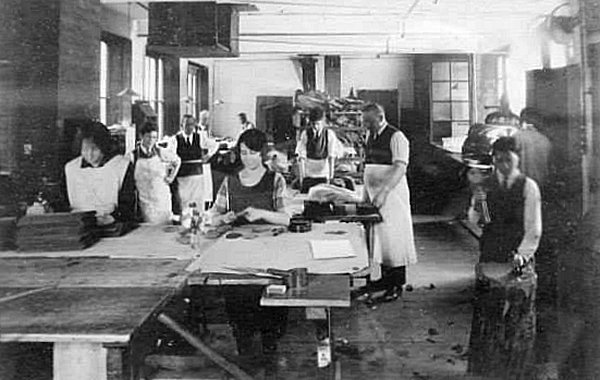
The webbing and counting room.

The machine room.
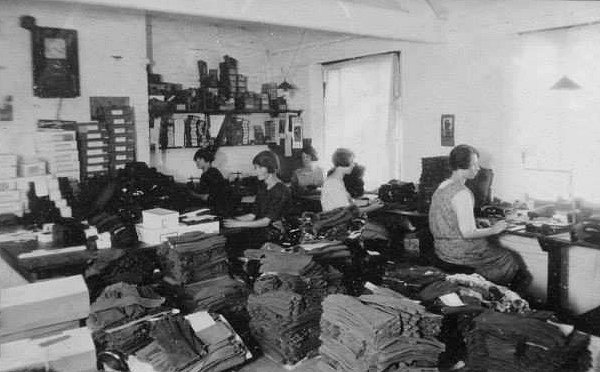
The banding and boxing department.